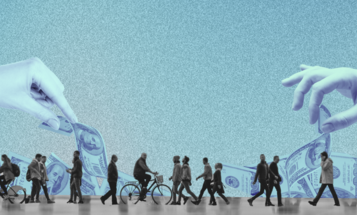
Tax Credits for Low-Income Working Parents Are a Boon to Employers
The retail and restaurant sector – two primary employers of low-wage workers – receive larger public subsidies than the fossil fuel industry in the form of public assistance for the working poor.
New data shows that more low-income workers are making use of tax credits that supplement their wages than ever before. As reported by the Center for Budget and Policy Priorities:
About 21 million low- and moderate-income working mothers received either the EITC or the low-income portion of the CTC in 2010. Internal Revenue Service (IRS) figures show that over 27 million Americans claimed the EITC, including about 21 million filers with children.
CBPP notes that these tax credits "have proven to be powerful tools for reducing children's poverty and advancing their long-term well-being."
Of course, though, they have also proven to be a boon for low-wage employers -- who can more easily pay their workers poverty wages when those workers can turn around and supplement their incomes through tax credits. Medicaid, SNAP, and SCHIP also make low-wage jobs more viable and act as indirect public subsidies to employers like Wal-Mart and McDonalds.
As I have written here before, it is no exaggeration to say that the retail and restaurant sector -- two primary employers of low-wage workers -- receive larger public subsidies than the fossil fuel industry in the form of public assistance for the working poor. This point needs to be made more often, since many Americans tend to see the employer-worker relationship as largely a private matter. But it's clearly not when the rest of us are picking up the tab for keeping the working poor afloat.
Whether this is such a bad thing is less clear. The U.S. tax system is now quite progressive, which means that more affluent Americans are disproportionately paying for tax credits and public assistance. (Payroll taxes which fall more heavily on middle and lower income households go to support social insurance for seniors.) Wealthy employers and executives may be able to make more money because of low wages, but those making over $400,000 a year are now paying nearly 50 percent of their income in taxes when you factor the new top income tax rate (39.5 percent), the new Medicare surtax (3.8 percent), and state and corporate income taxes.
One way or the other, the wealthy pay for low wages. Ultimately, though, subsidies have a distorting effect on the market, and it would be both fairer and more efficient for employers to pay their workers more instead of counting on government subsidies.



